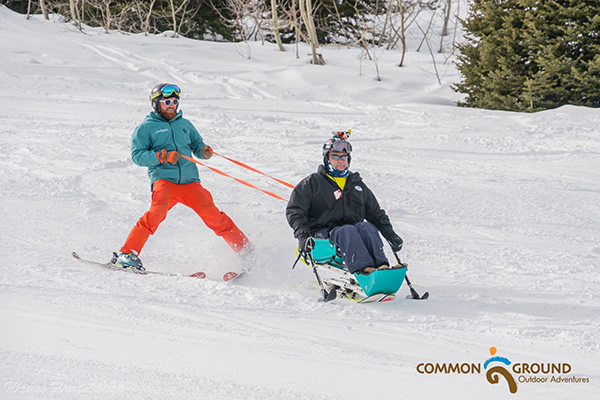 A full transcript of this episode is available in English and Spanish.
A full transcript of this episode is available in English and Spanish.
Physical activity can be fun, social, and energizing; it is an important part of health and wellness. However, physical activity can lack the necessary accessibility required for inclusion of people with disabilities. With a limited opportunities and an excess of barriers, it can be challenging for individuals with disabilities to be involved in physical exercise.
DDNJ Podcast: Physical Activity is for Everyone
An interview with Dr. Samantha Ross and Bridgette Schram
In the most recent episode of the Developmental Disabilities Network Journal's podcast Author Insights, Dr. Samantha Ross and Bridgette Schram explore the barriers and solutions for people with disabilities face to participate in accessible and inclusive physical activity. The episode was hosted by the Institute for Disability’s executive director, Matthew Wappett.
The empowerment and wellness that result from physical exercise has been missing from the disability conversation in research, practice, and implementation. Wappett explains, “[Physical activity] helps you develop those self-advocacy skills, and that self-determination, and everything else. … This whole aspect of physical activity and fitness has been missing, in many ways, for a long time from this disability field.”
Photo from Common Ground, Logan
Proving Wappett’s point, Schram describes her experience working in a fitness environment: “I taught a lot of kids and adults with disabilities and realized that that was pretty rare. … There are very limited opportunities.”
Ross affirms, “We've been missing people with disabilities in the discussion of physical activity, and we've been missing people with disabilities in the design of research.”
Ross and Schram have worked together to improve the world of physical activity for individuals with disabilities. Attempting to increase inclusion and accessibility is a much-needed effort, but such attempts can sometimes do more harm than good. Schram describes how physical activity interventions can “increase disparities if they’re not designed well,” leading to more oppression and more exclusion of people with disabilities.
To solve this problem, there must be a collaborative effort between people with and without disabilities. Schram explains, “As someone that doesn't identify as having a disability, […] I don't know what those experiences are firsthand, and the only way I'm going to know is by including and by listening.”
Wappett agrees, “This is a community responsibility. Community inclusion isn’t disability professionals coming in and creating a program. It’s everybody’s responsibility.”
Physical activity is beneficial for all people, no matter the ability level.
You can find more resources about physical activity inclusion below.
You can learn more about the journal and its companion podcast on our website. Subscribe to DDNJ Author Insights on Apple Podcasts, Spotify and Google Podcasts.
Resources
NCHPAD Guidelines for Disability Inclusion in Programs & Policies
The Inclusive Fitness Kitbag for Marketing Gyms to Disabled People
NCHPAD Accessibility Instruments Measuring Fitness and Recreations Environments Manuals
ACSM Specialty Certifications and Certificates
About the Authors
Ross is an assistant professor with the College of Physical Activity and Sports Sciences at West Virginia University. She received her doctoral and Master education at Oregon State University. Schram is a doctoral student at Georgia State University. She is a graduate research assistant at the Georgia State UCEDD. Together they authored “Promoting Inclusion of Adults with Disabilities in Local Fitness Programs: A Needs Assessment” in the latest issue of DDNJ.

